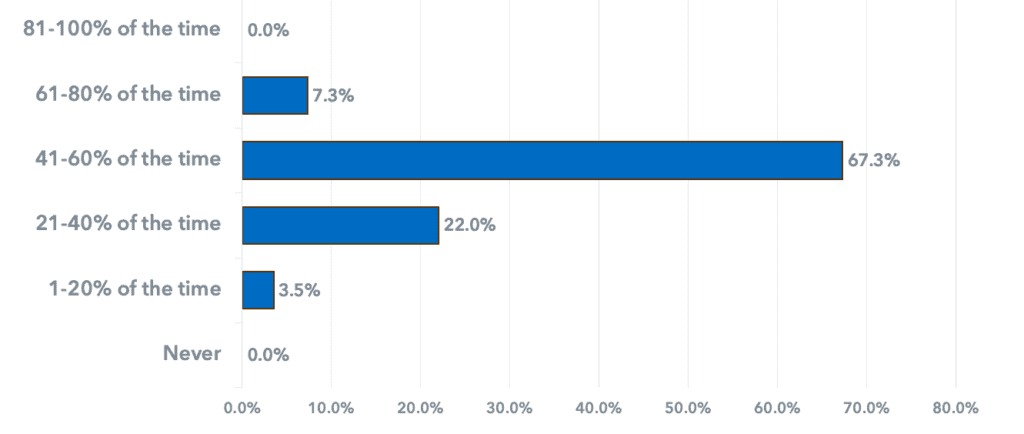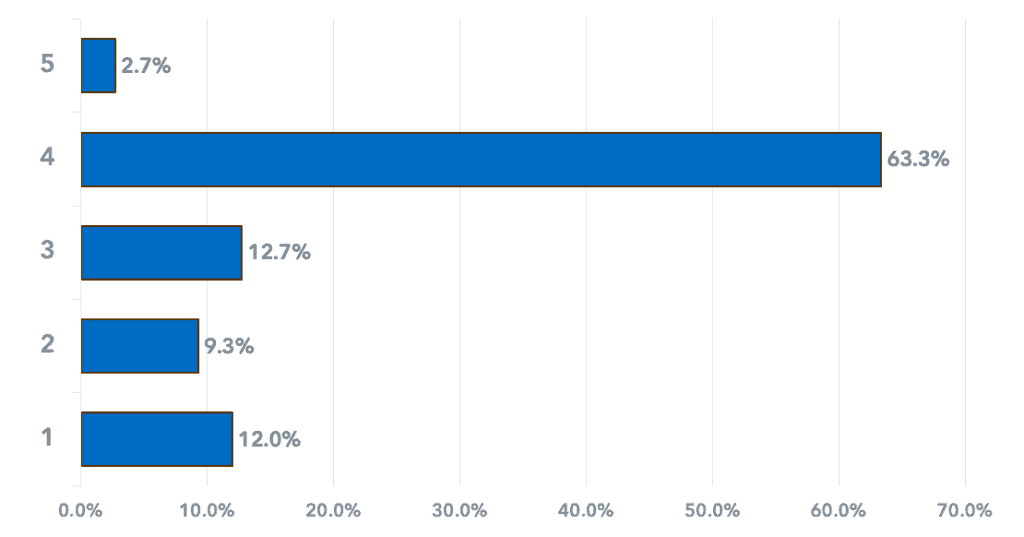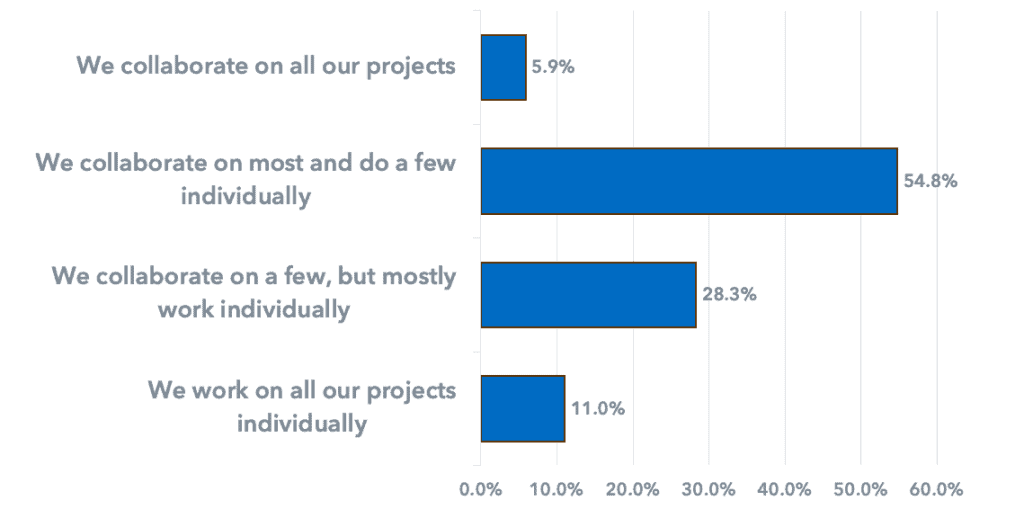Six Global Trends in Analytics from our 2019 Survey – Part 2
- John Morrell
- September 20, 2019

Datameer Spotlight conducted two surveys of analytic professionals in 2019, with intent to uncover trends in analytics, understand how leading analytics professionals work with data and assets in their analytic processes. Data analysts, data scientists and analytics leaders were asked questions about their roles, data sources, data access methods, types of analysis and analytic processes.
In part one of this blog we explored three interesting analytics trends from our survey:
- Business analysts deal with a disparate data landscape
- Data consumption is not efficient
- Knowledge about data is kept in many places
Here in part 2, we will discuss three additional interesting findings from this survey.
Exploratory analytics is on the rise
In the survey we asked analysts: what percentage of their time they spent answering new questions with exploratory analytics, and how often they received requests for new analyses. Nearly 3/4s of the respondents reported spending between 41-60% or 61-80% of their time performing new exploratory analytics. In addition over half of the respondents stated new questions were thrown at them at daily or every 2 to 3 days. These reuests usually came from department managers and business leaders, and that answering these questions often required analyzing new data assets.

Question: What percentage of your time do you spend answering new questions with exploratory analytics?
The demand for exploratory analytics indicates that management is asking more sophisticated questions about the markets, customers and operations that their organizations interact with, and that the pace of business requires constantly asking new questions in these areas. Those questions require analysts to perform exploratory analyses to obtain sufficient depth and nuance for their reports. After all, if a company wants to base its operations on data, management has to be able to rely on factual information and not guesswork.
They’re challenged to add new analytic workloads
We asked analytic professionals on a scale of one to five, with five being most difficult, how difficult it was to add new workloads in their analytic environments. Nearly two-thirds (66%) of respondents claimed it was difficult or very difficult to add new workloads, rating the difficulty a four or five.

Question: On a scale of 1 to 5, with 5 being most difficult, how difficult is it for you to add new analytic workloads?
Adding workloads is often a complicated process because of the restrictions information technology (IT) teams place in on-premise hardware and software resources, such as data warehouses and lakes. These restrictions result in a stalemate between IT teams and data analysts, who need access to exploratory analytics workloads. Exploratory analytics must be performed to provide management with greater insights, but IT teams are often loath to risk hindering critical business-intelligence processes so data analysts can run complex exploratory analytics queries.
To circumvent the conflict, many business-analyst teams that require exploratory workload analytics are increasingly looking to the cloud. Its flexible compute and storage resources make it perfect for the task.
Many organizations see moving data for analytics to the cloud as having risks around data security. A recent TDWI report on Cloud Data Management Best Practices cited data privacy, governance and security as major barriers to managing data in the cloud. This same report recommended using hybrid data architectures with data virtualization to mitigate these risks.
Analysts who work together perform better
Collaboration around data and analytics is becoming increasingly important to analytic teams, especially as analyses become more complex. When asked about how their teams collaborate on analytics projects, more than 60% of data analysts reported collaborating on most or all of them.

Question: How does your team collaborate on analytics projects?
Collaboration isn’t a new idea, but it’s an effective one. Many businesses that create such collaborative workspaces in other applications and tools such as CRM, increasing business efficiency as a result.
Business leaders interested in improving the efficiency and knowledge among data analysts should consider using analytic tools that offer collaborative workspaces. In these spaces, teams can share analytic assets and knowledge about those assets allowing analysts in different departments to analyze data more quickly and approach their analyses more holistically.
Wrap-up
In this second part of our analysis of the Datameer Spotlight surveys of analytic professionals, we uncovered three more analytics trends:
- Exploratory analytics is on the rise as management is asking new questions with increasing frequency and complexity
- Analytic teams face difficulty in adding new exploratory analytic workloads but can use the cloud and data virtualization to circumvent this issue
- Analytic teams seek to collaborate on their projects and could use a collaborative platform to share assets and knowledge on projects.
Datameer Spotlight is designed to address each of these three challenges with a platform that supports ad-hoc exploratory analytic workloads, a cloud-native SaaS solution that virtualizes data and collaborative tools to share analytic assets and knowledge with team members.
To learn more about how Datameer can help you unlock the power of your data and analytic assets, Sign up for your free trial today!


